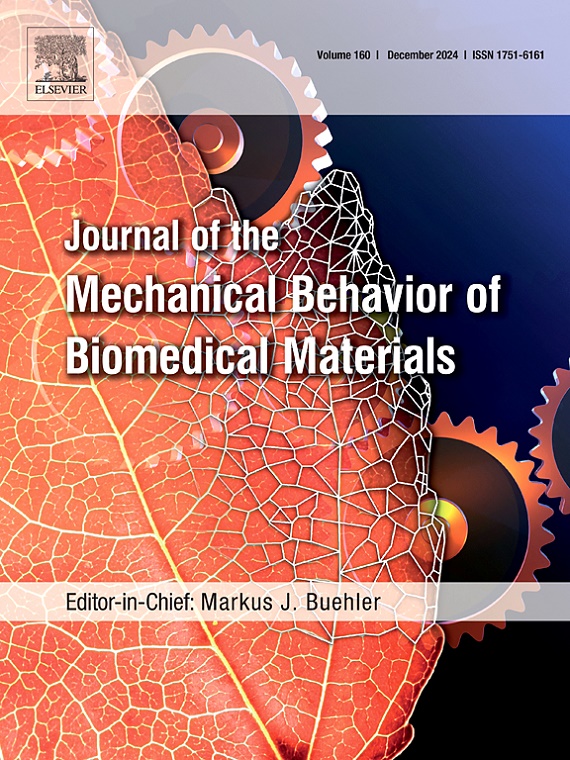Scaffold geometries designed to promote bone ingrowth by enhancing mechanobiological stimulation and biotransportation - A multiobjective optimisation approach
IF 3.3
2区 医学
Q2 ENGINEERING, BIOMEDICAL
Journal of the Mechanical Behavior of Biomedical Materials
Pub Date : 2024-12-31
DOI:10.1016/j.jmbbm.2024.106883
引用次数: 0
Abstract
In a tissue-engineered bone scaffold implant, the process of neo-tissue ingrowth and remodelling into hard lamellar bone occurs slowly; it typically requires a period of several months to a year (or more) to complete. This research considers the design optimisation of a scaffold's unit cell geometry for the purpose of accelerating the rate at which neo-tissue forms in the porous network of the scaffold (ingrowth), and hence, reduce the length of time to complete the bone ingrowth process. In this study, the basic structure of the scaffold is the Schwarz Primitive (P) surface unit cell, selected for its compelling biomechanical and permeability characteristics. The geometry of the scaffold is varied using two parameters (namely iso-value, k, and spatial period, a) within the surface equation defining the Schwarz P-surface unit cell. In total, sixteen different unit cell geometries are considered here with the porosity ranging from 50% to 82%.
The design objectives for the scaffold are to (i) enhance mechanobiological stimulus conditions conducive to bone apposition and (ii) enhance permeability to improve the transport of nutrients/oxygen and metabolities to and from the sites of neo-tissue formation throughout the porous scaffold. The independent design variables ( and ) of the periodic unit cell geometry are optimised to best satisfy the design objectives of appositional mechanobiological stimulus and biotransporting permeability. First, a reconstructed sheep mandible computed tomographic (CT)-based finite element (FE) analysis model is used to relate the strain energy density and mechanobiological stimulus to the design variables. Next, a computational fluid dynamics (CFD) model of a 5 × 5 × 5 unit cell scaffold is developed to relate the distributions of pressure and fluid velocity to the design variables. Then, surrogate modelling is undertaken in which bivariate cubic polynomial response surfaces are fitted to the FE and CFD analysis output data to form mathematical functions of each objective with respect to the two design variables. Finally, a multiobjective optimisation algorithm is invoked to determine the best trade-off between the competing design objectives of mechanobiological stimulus and biofluidic permeability. The novel design of the scaffold structure is anticipated to provide a better biomechanical and biotransport environment for tissue regeneration.
求助全文
约1分钟内获得全文
求助全文
来源期刊

Journal of the Mechanical Behavior of Biomedical Materials
工程技术-材料科学:生物材料
CiteScore
7.20
自引率
7.70%
发文量
505
审稿时长
46 days
期刊介绍:
The Journal of the Mechanical Behavior of Biomedical Materials is concerned with the mechanical deformation, damage and failure under applied forces, of biological material (at the tissue, cellular and molecular levels) and of biomaterials, i.e. those materials which are designed to mimic or replace biological materials.
The primary focus of the journal is the synthesis of materials science, biology, and medical and dental science. Reports of fundamental scientific investigations are welcome, as are articles concerned with the practical application of materials in medical devices. Both experimental and theoretical work is of interest; theoretical papers will normally include comparison of predictions with experimental data, though we recognize that this may not always be appropriate. The journal also publishes technical notes concerned with emerging experimental or theoretical techniques, letters to the editor and, by invitation, review articles and papers describing existing techniques for the benefit of an interdisciplinary readership.
 求助内容:
求助内容: 应助结果提醒方式:
应助结果提醒方式:


